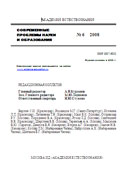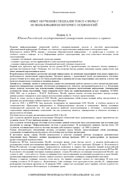PDF-версия статьи


|
In addition people of different disability groups are experiencing great difficulties in socialization because of their disadvantages during the whole their life. It dramatically reduces their level of life quality and wounds them mentally. Exactly increasing quality of life such people and more optimal integration them into society is one of the problems which every country and the whole world try to solve.
One of the ways solving problem of socialization and increasing life quality level is developing prosthesis, which can replace lost limb or part of it. Prosthesis allows disabled person to fade accent on current invalid disabilities and decrease discomfort, which person experiences. Also it can help them to adapt in real world.
The most interest for prosthetics represents electrophysiological robotic prosthesis. Researching in this sphere will allow creating devices fully replacing lost fragments of locomotor apparatus in future with causing minimal discomfort and maximum control ability. Electrophysiological prosthesis is including in their construction electrophysiological interface, which uses as an informative parameter electrophysiological body signal for controlling electronics of prosthesis device.
Myoelectric interface is based on biological signal that retrieved from muscle tissue. As usual electrodes of such interfaces are placed over the muscle on skin. But the practice of invasion electrodes into muscle tissue and individual fascicle is allowed. The last method can causes the risks of the muscle mechanical stress and the infection of healthy body part. Implementation myoelectric interfaces are generally widespread in prosthetic devices. Using of these interfaces is limited by surface of remained muscle parts are involved which is should provide controlling information for prosthesis. Currently, the most advanced commercial electromechanical prostheses which replace complex part of limb such as prosthesis of arm part below elbow usually special controlling methodic is required. This is a great disadvantage for patient due to it is unnatural, cumbersome.
Presented method of prosthetic interface improving due to developed nanotechnology based sensors. Developed sensors characteristic improves quality of control signal and allow creating enhanced bioelectric human-machine interface possesses high sensitivity and fast response time.
It is planning to use developed technology for implementation into myoelectric interface, which allows designing prosthetic devices with such features as high sensitivity, long durability, fast response time in comparison with other due to absence of inertial blocks; usability and ease of control due to non-invasiveness.
Currently, conducting research is directed to solve such problem as optimal ergonomic form of nanosensor which is better fits to human anatomy. In this case form improvement will allow gaining better body contact, ease of use and cleaning, and lessen discomfort during using sensors. In the end of this study experimental prototype of the ergonomic nanosensor will be developed and integrated in nanosensor biological interface study.
ОПУБЛИКОВАНО
Turushev N.V. Myoelectric interface development. // Современные проблемы науки и образования - 2015.-№6. (приложение "Технические науки"). - C. 18